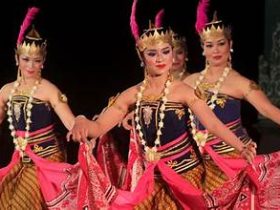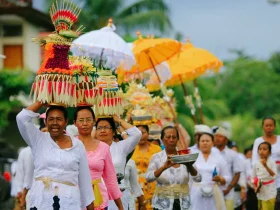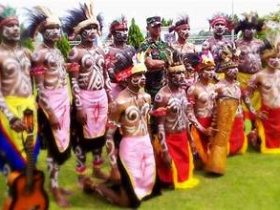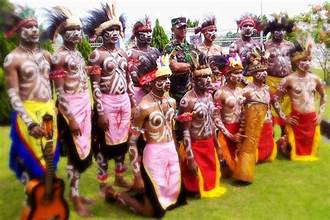Papua, the easternmost province of Indonesia, is a region renowned for its breathtaking landscapes and vibrant cultural diversity. Nestled on the island of New Guinea, Papua boasts a unique and rich cultural tapestry that captivates the hearts of those who venture into its midst. In this article, we delve into the fascinating world of Papua’s cultural heritage, exploring the diverse traditions, customs, and rituals that define the essence of this remarkable Indonesian province.
- Papuan Traditional Arts: Papua is a treasure trove of traditional arts, with each indigenous community contributing its unique forms of expression. From the intricate wood carvings of the Asmat people to the elaborate body paintings of the Dani tribe, the province is a living canvas of artistic prowess. These art forms not only serve as a means of cultural expression but also play a crucial role in preserving the identity of the Papuan people.
- Cultural Festivals: The vibrant festivals of Papua are a testament to the celebratory spirit of its people. One of the most significant events is the Baliem Valley Festival, where various tribes showcase their traditional dances, music, and rituals. These festivals not only provide a spectacle for visitors but also foster a sense of unity and pride among the diverse ethnic groups that call Papua home.
- Traditional Cuisine: Papua’s culinary landscape is a reflection of its cultural diversity. Local dishes, such as Papeda and Sagu Bakar, highlight the use of indigenous ingredients like sago and fish. Exploring Papuan cuisine is not only a delightful gastronomic experience but also an opportunity to understand the deep connection between the region’s culture and its culinary heritage.
- Indigenous Languages: Papua is home to a myriad of indigenous languages, each representing a distinct cultural group. The preservation of these languages is crucial for maintaining the rich oral traditions and storytelling that have been passed down through generations. Efforts to document and revitalize these languages contribute to the overall preservation of Papuan culture.
- Sacred Rituals: The spiritual beliefs of the Papuan people are intertwined with their daily lives, marked by various sacred rituals. From initiation ceremonies to elaborate dances honoring ancestral spirits, these rituals are deeply rooted in the cultural fabric of Papua. Understanding and respecting these ceremonies offer a profound insight into the spiritual dimensions of Papuan culture.
Conclusion:
In conclusion, Papua’s cultural richness is a source of pride for both its inhabitants and those fortunate enough to witness its beauty. The province’s diverse traditions, arts, festivals, cuisine, languages, and sacred rituals collectively contribute to a cultural kaleidoscope that is uniquely Papuan. As we celebrate and appreciate this cultural heritage, it is essential to foster sustainable tourism and initiatives that support the continued flourishing of Papua’s rich cultural legacy.






Leave a Reply